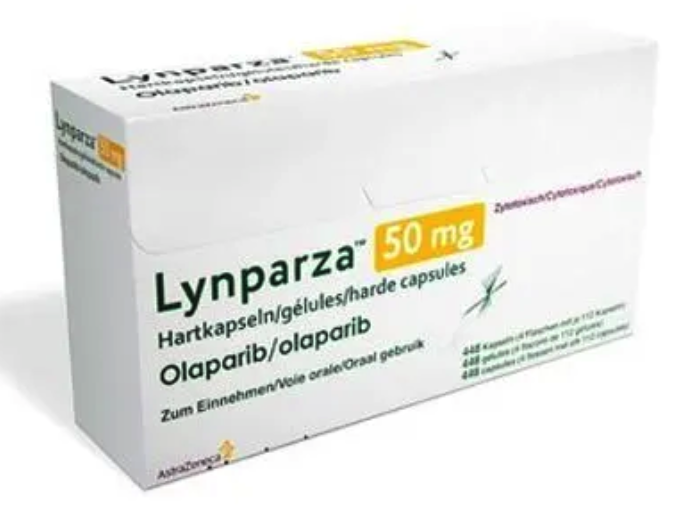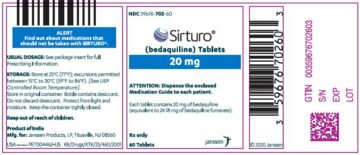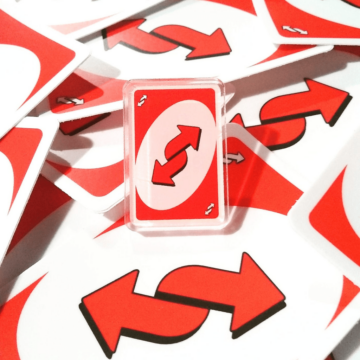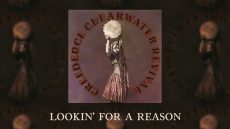
Recently, a Single judge bench of the Delhi High Court, in Kudos Pharmaceuticals Ltd. v. Natco Pharma Ltd., granted an interim injunction in favour of Kudos Pharmaceuticals, restraining the defendants (Natco) from ‘manufacturing and selling, or in any manner, dealing with Olaparib, either under the brand name BRACANAT or under other brand name. In the present suit, Kudos, seeking a permanent injunction, argued that Natco was infringing the suit patent IN’ 720 (Claim 1 called ‘Olaparib’; species patent) by manufacturing and selling ‘its own generic version of Olaparib under the brand name BRACANAT.’
For a quick background, Olaparib is a daily-use anti-cancer medication, primarily used to treat Ovarian cancer, Breast cancer and Prostate cancer by inhibiting oral poly (ADP-ribose) polymerase (PARP) (here). Currently, the drug sold by the innovator costs around Rs. 72 Lakhs yearly during treatment. Whereas the generic version of Olaparib costs as low as Rs. 3 Lakhs (here). Thus, the case directly impacts millions of cancer patients in India from accessing affordable treatment for Cancer.
In this post I shall discuss how the case ignores several well-established precedents and principles in arriving at its conclusions in the present case.
Arguments
Natco contended that ‘Olaparib’ was disclosed in IN’ 218 (‘Genus Patent), a Markush structure. In Patent Law, Markush formulae, typically called the Genus Patent, represent chemical structures which contain a group of several relatedchemical compounds, often running into millions (here on page 8). Markush claim provides a ‘broad’ protection, covering the area in which a particular company wants to research. Subsequently, further research is undertaken to ascertain which among those compounds have the best combination properties to treat a particular disease. (see this video) After various tests, the ‘right’ molecule, which has the combination of ‘best’ properties, is identified and later patented. This is referred to as the ‘species patent’. In this case, Natco argued that ‘Olaparib’ was covered in the Genus Patent among other compounds therein. As a result, the ‘species patent’ was invalid on grounds of ‘prior claiming’ under Sec. 64(1)(a) of the Act and lack of novelty. Therefore, expiration of the Genus Patent in 2021, ‘Olaparib’ fell into the public domain for exploitation
Another contention raised by Natco was that the species patent failed the inventive test under Sec. 2(1)(ja) of the Act. Simply put, the species patent, in order to be eligible for a patent, must demonstrate ‘technical advance’ over existing knowledge, in this case, the Genus patent. Else it will fail to be eligible for a patent since the same product cannot be patented twice. One way to show ‘technical advancement’ is by proving the enhanced efficacy of the product over the existing work. Natco, therefore, argued that since Olaparib was already disclosed in the genus patent, it cannot be separately patented as a species patent since it failed to demonstrate any technical advancement .
On the other hand, Kudos argued that ‘coverage’ of ‘Olaparib’ does not mean it was ‘disclosed’ in the genus patent. It argued that “Disclosure of a chemical compound in a patent is done only through an individual identification of that compound in the patent document by its chemical name.” Rather, to be invalidated on ‘prior claiming’, it must be established that the two patents are “identical and enable a person skilled in the art to arrive at the species patent from the teachings which it provides.” On the inventive step, it argued that ‘Olaparib’ possesses economic significance over the prior art and thus satisfied the test under Sec. 2(1)(ja).
Determining the Onus to Prove Obviousness
In AstraZeneca AB v. Torrent Pharmaceuticals Ltd., it was noted that the ground of anticipation by prior claiming would normally arise in cases involving genus and species patent since a “substantial portion of the claim/claims in a species patent are bound to be imbibed in the claims of the genus patent.” In simple words, ‘anticipation by prior claiming’ means that the product sought to be patented was already disclosed in the complete specification of an earlier patent. Thus, the subsequent product is disqualified from a patent for lack of novelty. In such cases, the main question is whether the subsequent product is ineligible for patent since it was part of or covered within the broad genus patent.
The Patentee usually argues (see here and here) that there is a distinction between ‘coverage’ and ‘disclosure’. Unless the product is ‘specifically disclosed’ and ‘claimed’ in the complete specification, they argue, it cannot be said that the product is ineligible for ‘prior claiming’.
In FMC II, Justice Hari Shankar had concluded that “mere coverage within the genus patent will not render the species patent vulnerable” for prior claiming. Rather, “what is required, therefore, prima facie, is comparison of the claims.” Therefore, as per the Court’s understanding here, unless the invention was specifically claimed in a prior patent, no case for prior claiming is made out. Justice Hari Shankar adopts the same position in the present case to simply ask whether Olaparib was claimed in an earlier patent specification. Since there was no clear specification, the Court found the case against Natco.
The above observations seem to suggest that anticipation of prior publication can only be proved if there is a ‘specific disclosure’ of the suit patent in the claims of the prior patent. It is irrelevant to examine the scope of the coverage of the prior patent so long as the focus is on the ‘identity of claim’. This makes it even more difficult to prove ‘anticipation of prior publication’ u/s. 64(1)(a). The onus to prove prior claiming, generally, lies on the defendant, who, in this particular scenario, has not drafted the Genus patent. Per my understanding, it is tough to prove whether an invention was disclosed to the inventor at the stage of the genus patent itself since the defendant did not draft the patent nor was involved at the invention stage. (If other more knowledgeable readers disagree, please let me know in the comments.) Saying that anything short of ‘specific disclosure’ does not mean prior claiming raises the burden even further.
DHC in AstraZeneca AB (Divisional Bench), realising the above problem, held that the onus will be on the inventor itself to show that the species patent was not ‘obvious’ to them from the genus patent which, in the first place, is presumed to contain the former. (Also discussed here) Since the inventor is the one who wrote the specifications, it must show that the subsequent invention was not ‘obvious’ to him. The Court, by placing the onus on the “person in the know”, balances the huge information asymmetry existing in such cases between the inventor and the challenger. Therefore, the standard to be applied in determining the ‘obviousness’ of a product would be different in a situation where the manufacturer of the species patent and Genus patent are the same.
Therefore, rather than asking how was it ‘obvious’ to the person challenging the patent, it must be ascertained whether it was obvious to the patentee or not. Kudos had conceded that ‘Olaparib’ was “covered” in the genus patent. In this way, the onus was on them to prove that arriving at a species patent was not ‘obvious’ in the prior art for Kudos. However, in the present case, there is no mention of the test laid out by the DB in AstraZeneca AB.
Further, the above observations ignore several crucial precedents of the Delhi High Court.
Past Precedents
A coordinate bench decision in Boehringer Ingelheim Pharma v. Vee Excel Drugs and Pharmaceuticals noted that it is immaterial whether the product is specifically disclosed or not in an earlier patent as long as it is covered in such patent. In other words, there is no merit in differentiating between ‘coverage’ and ‘disclosure’ or otherwise it could lead to the same invention being patented twice or in other words called ‘evergreening. (Para 68) Similarly, a coordinate bench in Bayer Healthcare v. Natco Pharma said that an invention is ineligible for a patent if it was covered in an earlier patent lest it would lead to the ‘evergreening’ of a patent. (Para 71, 84) DHC in AstraZeneca AB, held that the practice of including certain compounds in the specifications of a genus patent but later arguing that they were ‘disclosed’ in the species patent is flawed. Why? Because it ringfences such compounds and prevent third parties from carrying out research in the area for the duration of the genus and species patent (40 years).
Similarly, in this case, although it was conceded by Kudos that ‘Olaparib’ was covered within the broader Markush patent wherein no one could research, it was argued that ‘Olaparib’ was specifically disclosed only in the species patent. Relying on AstraZeneca SB, the court could have looked into the aspect as to whether the motive of the said patent was solely to hinder further research by a third party or not. It could help in determining whether the species patent was obvious to the patentee at the stage of genus patent itself, which, according to AstraZeneca AB (Divisional Bench), is crucial for test to obviousness.
Public Interest: The missing factor
In Para 13, the Court lays out the factors which must be borne in mind in deciding the injunction application, that is, “whether there is a prima facie case in favour of the plaintiff, whether the refusal of interim relief would result in irreparable loss to the plaintiff, and which way the balance of convenience would lie.” Here, the judgement only engages with the first factor i.e. existence of a prima facie case. It fails engage with other factors in deciding whether to grant interim injunction or not.
Importantly, it fails to consider the ‘Public interest factor’. This aspect in Pharmaceutical infringement cases has previously been discussed on this blog here, here, here, here, and here
In Boehringer Ingelheim Pharma v. Vee Excel Drugs and Pharmaceuticals, in Para 92, took into consideration the fact that the drug, in that case, was used to treat ‘Diabetes’ and “public interest demands that large segments of the population should have easy and affordable access to an anti-diabetes drug.” It noted the huge gap in pricing which existed between the products of the plaintiff and defendant, the latter being significantly cheaper. In light thereof, it held that the balance of convenience was in the favour of the defendant. Similarly, in AstraZeneca AB (SB), the court noted in Para 38.1, “If one were to bear in mind the aspect concerning price as also the nature of the disease which is sought to be treated by the drug-in-issue, the scales of balance, in my opinion, at this stage, would weigh in favour of the defendants.” Also in Bayer Healthcare v. Natco Pharma, the court in Para 88, noted that “public interest would also demand that such injunction be refused inasmuch as it is claimed that there is a huge disparity between the price of the product offered by the plaintiff and the defendant for a disease which is life-threatening.”
However, no such factor was considered in the present case. In the present case, ‘Olaparib’ is an anti-cancer drug (Para 8) which is a life-threatening disease. As reported here, the price of the generic ‘Olaparib’ is capped at Rs. 3 Lakh whereas the ‘Olaparib’ by AstraZeneca costs around 72 Lakh. Evidently, the balance of convenience does not lie in favor of Kudos in the present case since irreparable injury will accrue to public owing to non-availability of affordable medicines.
Conclusion
In this post, the author raises the issue of double-patenting where the same invention enjoys two terms of protection under the Patent Act. Similar concerns about “gaming” the patent regime have been expressed in the abovementioned precedents. The main question, as seen above, is whether a species patent falling under the umbrella of a genus patent is valid or not. In this order, both parties point out the divergent positions existing on the issue. Currently, an appeal has been filed against the present judgement. Hopefully, the Division Bench will provide more clarity on the issue. It is important to keep in mind the implications it might have on evergreening attempts by pharmaceutical companies.
[Hat tip to an anonymous reader for their inputs on the post.]
- SEO Powered Content & PR Distribution. Get Amplified Today.
- PlatoData.Network Vertical Generative Ai. Empower Yourself. Access Here.
- PlatoAiStream. Web3 Intelligence. Knowledge Amplified. Access Here.
- PlatoESG. Carbon, CleanTech, Energy, Environment, Solar, Waste Management. Access Here.
- PlatoHealth. Biotech and Clinical Trials Intelligence. Access Here.
- Source: https://spicyip.com/2024/04/dhcs-concerning-order-in-kudos-pharmaceuticals-v-natco-pharma-will-it-lead-to-evergreening.html
- :has
- :is
- :not
- :where
- 1
- 13
- 2021
- 27
- 30
- 40
- 72
- 8
- 84
- a
- About
- above
- access
- accessing
- According
- Act
- advancement
- affordable
- After
- against
- already
- also
- Although
- am
- among
- an
- and
- Anonymous
- anticipation
- any
- anything
- Application
- applied
- ARE
- AREA
- argue
- argued
- Argues
- arise
- around
- arrive
- arriving
- Art
- AS
- ask
- asking
- aspect
- asymmetry
- At
- Attempts
- author
- background
- Balance
- balances
- BE
- Bear
- because
- been
- being
- BEST
- between
- both
- both parties
- bound
- brand
- Breast cancer
- broad
- broader
- burden
- but
- by
- called
- CAN
- Cancer
- cancer patients
- cannot
- capped
- carrying
- case
- cases
- certain
- challenger
- challenging
- cheaper
- chemical
- claim
- claimed
- claiming
- claims
- clarity
- clear
- combination
- comments
- Companies
- company
- complete
- Compound
- concerning
- Concerns
- concluded
- Conclusions
- Consider
- consideration
- considered
- contain
- convenience
- coordinate
- Costs
- could
- Court
- coverage
- covered
- covering
- crucial
- Currently
- dealing
- Deciding
- decision
- defendants
- Delhi
- Demand
- demands
- demonstrate
- determining
- DID
- different
- difficult
- directly
- discuss
- discussed
- Disease
- distinction
- Division
- document
- does
- domain
- done
- draft
- drafted
- drug
- Drugs
- duration
- during
- e
- Earlier
- easy
- Economic
- efficacy
- either
- eligible
- else
- enable
- engage
- engages
- enhanced
- established
- Ether (ETH)
- Even
- examine
- Excel
- existed
- existence
- existing
- expiration
- expressed
- fact
- factor
- factors
- FAIL
- Failed
- fails
- Falling
- favor
- filed
- First
- flawed
- Focus
- For
- Former
- found
- from
- further
- gap
- generally
- grant
- granted
- Ground
- grounds
- Group
- had
- hand
- hat
- Have
- healthcare
- Held
- help
- here
- High
- him
- hinder
- Hopefully
- How
- However
- HTML
- HTTPS
- huge
- i
- Identification
- identified
- if
- ignore
- image
- Impacts
- implications
- important
- in
- In other
- Including
- india
- individual
- information
- infringement
- injury
- Innovator
- inputs
- interest
- interim
- into
- invalid
- Invention
- involved
- involving
- issue
- IT
- ITS
- itself
- judge
- Justice
- Keep
- Know
- knowledge
- KUDOS
- Lack
- laid
- large
- later
- latter
- Law
- Lays
- lead
- let
- lie
- lies
- light
- Long
- looked
- loss
- Low
- Ltd
- made
- Main
- MAKES
- manner
- Manufacturer
- manufacturing
- max-width
- me
- mean
- means
- medication
- mention
- Merit
- might
- millions
- mind
- missing
- molecule
- more
- motive
- must
- my
- name
- Nature
- no
- nor
- normally
- noted
- novelty
- observations
- obvious
- of
- offered
- often
- on
- ONE
- only
- onus
- Opinion
- or
- oral
- order
- Other
- otherwise
- out
- Ovarian Cancer
- over
- own
- page
- PARA
- part
- particular
- parties
- party
- patent
- patented
- Patents
- patients
- per
- permanent
- person
- Pharma
- Pharmaceutical
- pharmaceuticals
- Place
- placing
- plato
- Plato Data Intelligence
- PlatoData
- please
- Point
- population
- portion
- position
- positions
- possesses
- Post
- practice
- present
- prevent
- previously
- price
- pricing
- primarily
- principles
- Prior
- Problem
- Product
- Products
- properties
- protection
- Prove
- proved
- provide
- provides
- proving
- public
- Publication
- put
- question
- Quick
- raised
- raises
- rather
- Reader
- readers
- referred
- refusal
- regime
- relief
- relying
- render
- represent
- required
- research
- result
- running
- Said
- same
- satisfied
- saying
- scales
- scenario
- scope
- SEC
- seeking
- seem
- seen
- segments
- Selling
- separately
- several
- Short
- should
- show
- significance
- significantly
- similar
- Similarly
- Simple
- simply
- since
- single
- situation
- skilled
- So
- sold
- solely
- sought
- specifically
- specification
- specifications
- Stage
- standard
- Step
- structure
- structures
- subsequent
- Subsequently
- such
- suggest
- Suit
- Technical
- terms
- test
- tests
- than
- that
- The
- The Area
- their
- Them
- There.
- therefore
- therein
- they
- Third
- third parties
- this
- those
- Through
- Thus
- tip
- to
- took
- Torrent
- tough
- treat
- treated
- treatment
- Twice
- two
- typically
- umbrella
- under
- understanding
- unless
- used
- usually
- valid
- various
- version
- Video
- wants
- was
- Way..
- weigh
- were
- whereas
- whether
- which
- WHO
- why
- will
- with
- within
- words
- Work
- would
- wrote
- yearly
- years
- youtube
- zephyrnet



![Oreo v Fab!o: A Ballad of Colours and Syllables [PART II]](https://platoaistream.net/wp-content/uploads/2023/04/oreo-v-fabo-a-ballad-of-colours-and-syllables-part-ii-360x203.jpg)


![Free Certificate Course in Application of Intellectual Property Rights for Startups and Entrepreneurship [November 22- 23]](https://platoaistream.net/wp-content/uploads/2023/11/free-certificate-course-in-application-of-intellectual-property-rights-for-startups-and-entrepreneurship-november-22-23-360x210.png)





